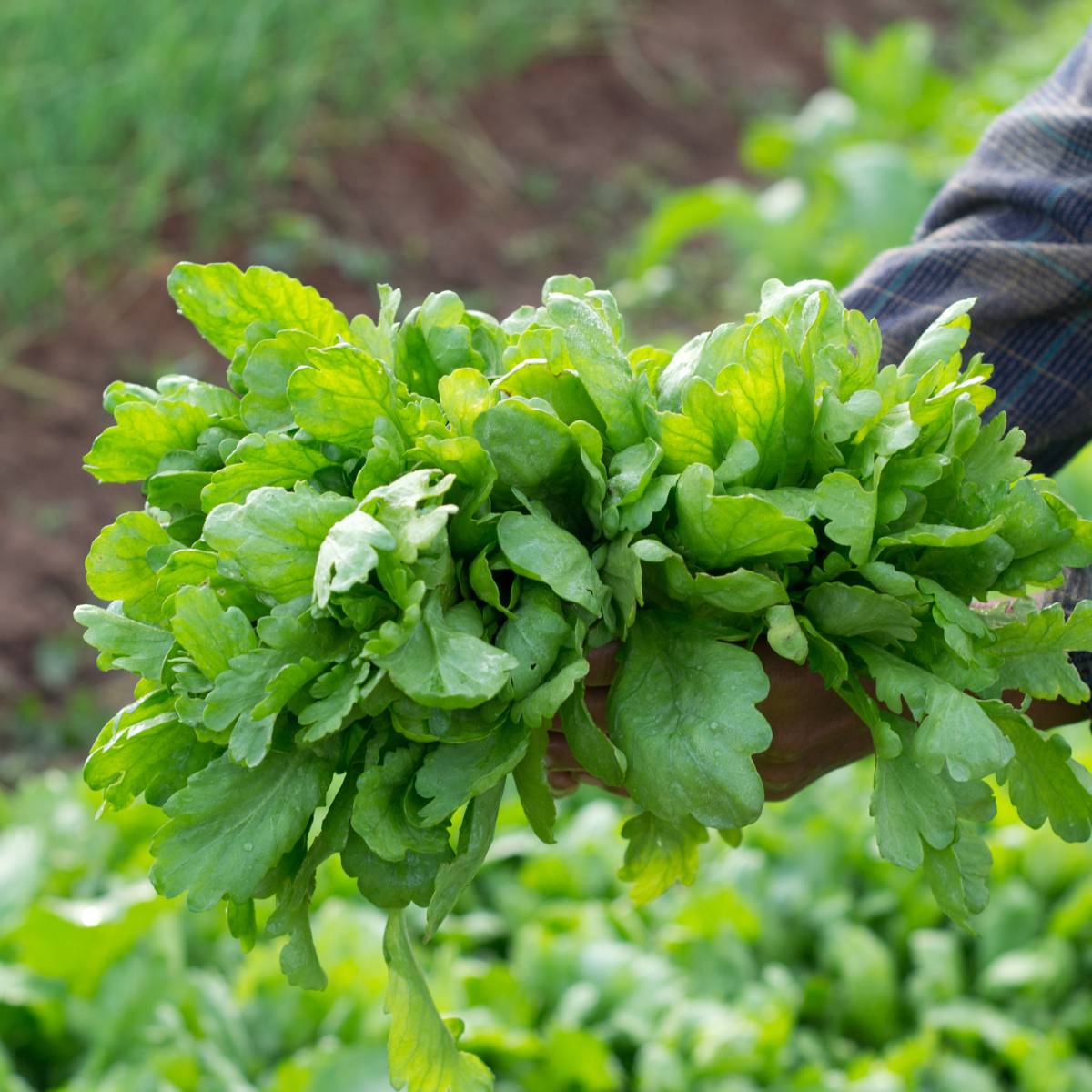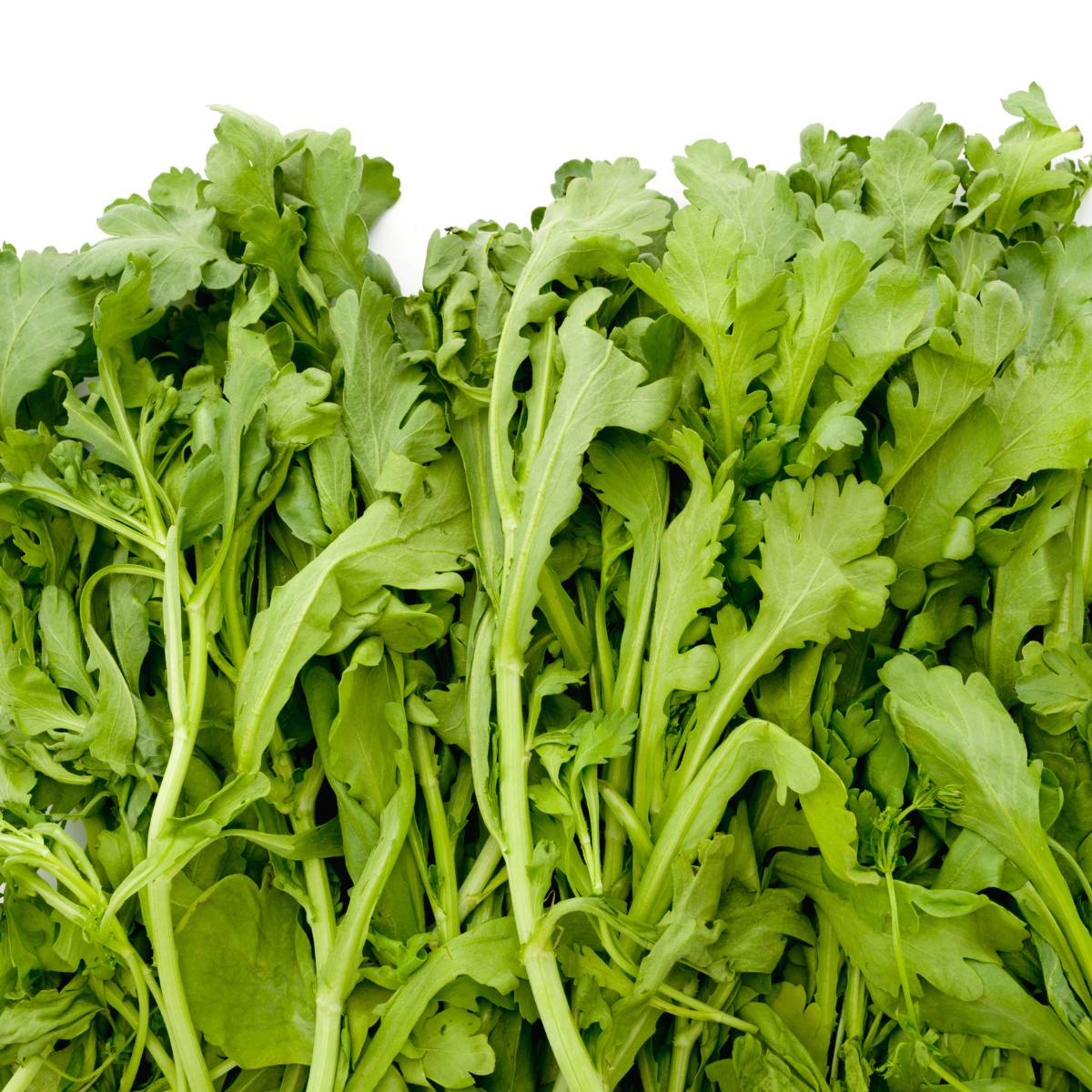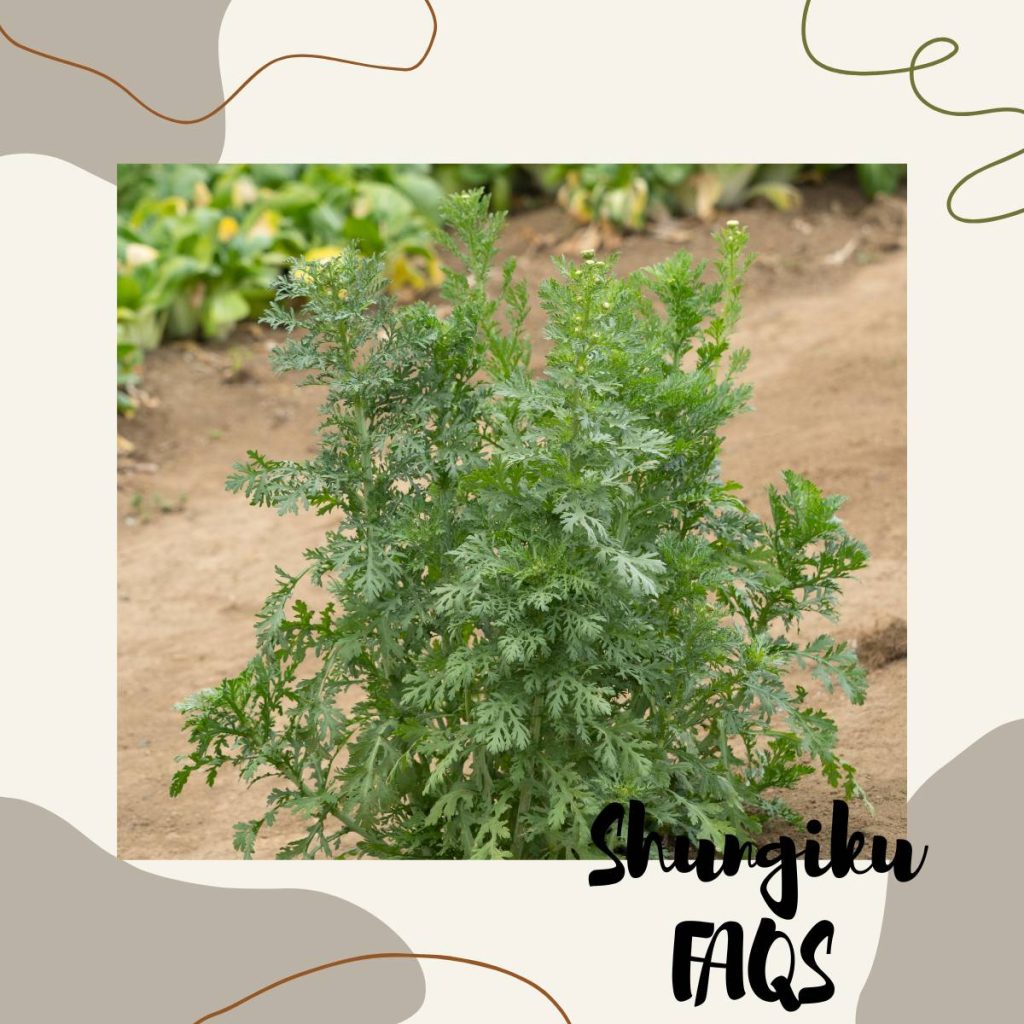Are you tired of the same old vegetable options at the grocery store?
Why not try something new and exciting with the unique and flavorful Japanese vegetable, shungiku?
Let’s explore this green leafy vegetable.
What is shungiku?
Shungiku is a leafy green vegetable that is commonly used in Japanese cuisine.
It is also known as garland chrysanthemum, edible chrysanthemum, or crown daisy.
The leaves of shungiku are dark green and serrated, with a slightly bitter taste.

How shungiku is grown?
Shungiku is a hardy plant that is relatively easy to grow, and it can be grown in a variety of conditions.
It is typically grown as an annual crop, meaning that it is planted each year and harvested before the end of the growing season.
Shungiku is often grown from seed, which can be planted directly in the ground or in seed trays indoors.
It prefers well-drained soil and a sunny location, but can also tolerate some shade.
The plant typically takes 6-8 weeks for shungiku to reach maturity and be ready for harvest.
The leaves and stems can be harvested by cutting them at the base of the plant, leaving some leaves and stems behind to continue growing.
What does shungiku taste like?
Shungiku has a slightly bitter taste, with a subtle earthy and floral flavor. It is often used to add a fresh, herbal flavor to soups, stews, and other dishes.
What are the health benefits of shungiku?
Shungiku is a nutrient-dense vegetable that is rich in vitamins and minerals.
It is a good source of vitamin A, vitamin C, vitamin K, calcium, and potassium.
It also contains antioxidants and other plant compounds that may have health benefits, such as reducing inflammation and improving immune function.

How do I prepare shungiku?
Shungiku can be used in a variety of ways in Japanese cuisine.
It is often added to soups, rice meals, stews, and hot pot dishes, or used as a garnish for sushi and other dishes.
To prepare shungiku, simply wash the leaves and trim off any tough stems.
The leaves can be used whole or chopped, depending on the recipe.
Try my recipe for Shungiku Mazegohan | Japanese Mixed Rice with Chrysanthemum Greens
Is shungiku suitable for vegans and vegetarians?
Yes, shungiku is suitable for vegans and vegetarians.
It is a plant-based vegetable that is commonly used in vegetarian and vegan Japanese dishes.
Where can I buy shungiku?
Shungiku can be found at many Asian grocery stores and specialty markets.
It may also be available at some farmer’s markets or through online retailers.
You can buy seeds of this plant online here.
How should I store shungiku?
Shungiku should be stored in the refrigerator in a plastic bag or airtight container. It will keep for up to a week if stored properly.

What are the different types of shungiku?
There are several different varieties of shungiku, including hamanasu, which has a slightly sour taste; suzuna, which has thin, tender leaves; and okame, which has a milder flavor and is often used in salads.
Each variety has its own unique flavor and texture and can be used in different ways in Japanese cuisine.
Conclusion
With its slightly bitter taste and subtle earthy and floral flavor, shungiku adds a unique twist to soups, stews, and other dishes.
Not only is it delicious, but it is also nutrient-dense and packed with vitamins and minerals.
Whether you’re a seasoned chef or just starting to experiment with Japanese cuisine, shungiku is a versatile and flavorful ingredient that is sure to elevate your dishes to the next level.
So why not give it a try and see what new flavors and textures it can bring to your cooking?
And if you want to learn Japanese pickles, you can avail my Otsukemono Cookbook.










Konnichiwa! (Hello!) I'm Pat Tokuyama, a Japanese tofu cookbook author, who travels for music, food, and adventure. If you like Japanese tea, checkout some of the newestorganic japanese tea, matcha bowls and noren and more!
** Curious about the Plant Based Japanese Cooking Club? ** Learn more here!